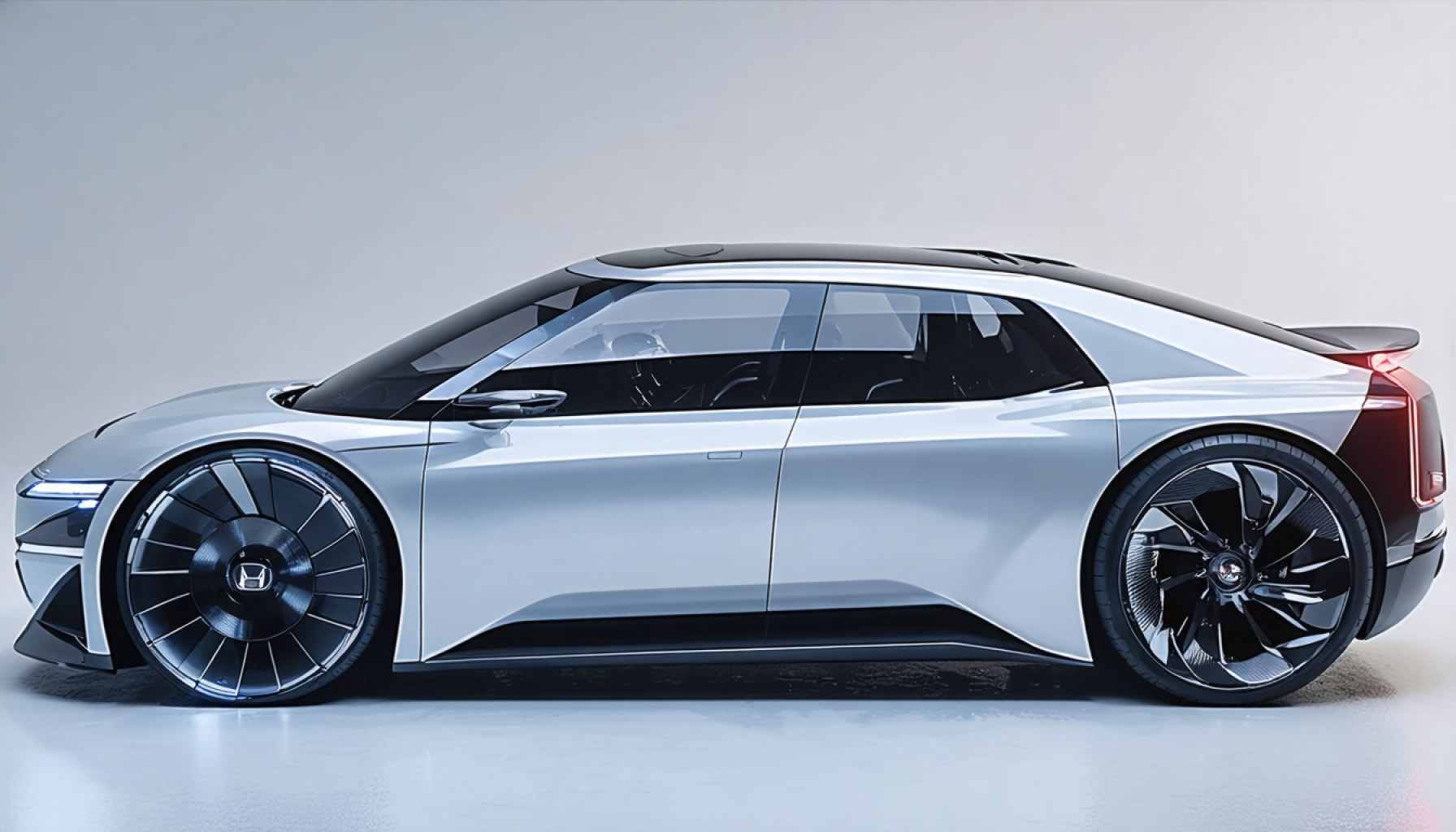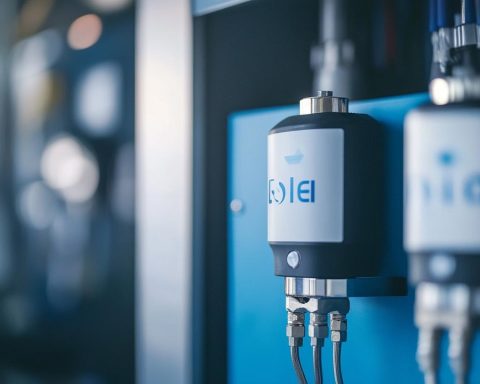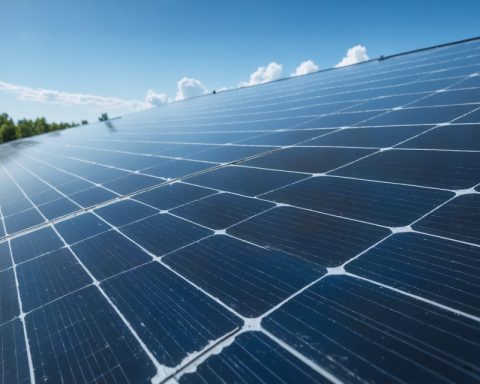- Honda has unveiled a groundbreaking hydrogen fuel-cell stack and module, offering over three times the volumetric power density of previous models.
- The new technology features an output of 150 kW (201 hp), doubling durability and significantly reducing production costs.
- Production of the new hydrogen fuel-cell stack is scheduled for 2027.
- In the meantime, Honda plans to adapt current fuel-cell technology for stationary power generators to serve construction and commercial sectors.
- Despite progress, challenges such as limited hydrogen infrastructure, primarily in California, remain.
- Honda’s collaboration with General Motors is uncertain, pointing to potential shifts in strategic partnerships.
- Amid existing hurdles, Honda’s innovation reflects a transformative vision for sustainable, clean energy across industries.
Honda propels itself into the future with a breakthrough in hydrogen technology. The Japanese automaker has introduced a new hydrogen fuel-cell stack and module that promises enticing advancements, promising not only significant boosts in performance but potential game-changers in the field.
Imagine a powerhouse of energy encased in a more compact unit, boasting over three times the volumetric power density of its predecessors. Honda’s latest innovation not only shines with an output of 150 kw (201 hp), but also offers twice the durability and costs a mere fraction to produce compared to older models. Yet, this marvel remains in the wings, with production earmarked for 2027.
In the interim, Honda isn’t sitting idle. The company will power ahead by adapting its current-generation fuel-cell technology into stationary power generators—an ambitious move extending the utility of hydrogen beyond the automotive world to construction and commercial sectors.
Yet, the landscape isn’t completely rosy. The timing of this revelation intrigues many, especially as Honda’s present fuel-cell tech, co-engineered with General Motors, has barely touched the market. This partnership, forged in a bid to conquer the hydrogen domain, now dangles in uncertainty. While Honda strides forward independently, General Motors explores other horizons, including potential collaborations with Hyundai.
Hydrogen infrastructure hurdles persist, with the U.S. largely offering refueling options only in California. However, as Honda’s relentless innovation demonstrates, the potential of hydrogen technology feels brighter than ever.
The key takeaway? While challenges loom ahead, Honda’s strides in hydrogen signify not just technological evolution, but a bold vision of future possibilities where cleaner, sustainable energy redefines entire industries.
Honda’s Hydrogen Breakthrough: What It Means and Why It Matters
How-To Steps & Life Hacks
For those interested in hydrogen technology, implementing hydrogen fuel cells within various sectors involves several steps. Here’s a brief rundown:
1. Understand the Basics: Know that hydrogen fuel cells generate electricity by combining hydrogen and oxygen, producing only water and heat as byproducts.
2. Application Assessment: Evaluate areas where hydrogen fuel cells could replace traditional energy sources. This could include mobile or stationary applications such as automobiles, backup power systems, or even industrial machinery.
3. Infrastructure Set-Up: While cost and logistical challenges exist, strategizing the setup of hydrogen refueling stations or onsite hydrogen generation can mitigate infrastructure scarcity.
4. Integration: Work with manufacturers or engineers to integrate hydrogen fuel cells into existing systems, ensuring compatibility and optimal performance.
5. Regulatory Compliance: Stay informed about local and international standards for hydrogen transport, storage, and usage.
Real-World Use Cases
Honda’s initiative is set to impact various sectors:
– Automotive: Enhanced fuel-cell vehicles (FCVs) with higher energy efficiency and lower production costs can lead to greater adoption of hydrogen cars.
– Construction and Commercial: Deployment of stationary power units powered by hydrogen can reduce reliance on traditional diesel generators, especially in off-grid areas.
– Industry Support: Companies like Honda are likely to explore partnerships for co-development initiatives in energy storage and sustainable infrastructure projects.
Market Forecasts & Industry Trends
– Growth Projections: According to a report by MarketsandMarkets, the hydrogen energy market is expected to grow at a CAGR of over 8% by 2026, driven by advancements in hydrogen fueling infrastructure and the dropping cost of production.
– Policy Influence: Increasing governmental policies favoring clean energy initiatives and carbon neutrality are likely to propel the demand for hydrogen technology.
Reviews & Comparisons
Honda’s innovation faces competition from other tech companies and automakers investing in hydrogen:
– Toyota: Known for their Mirai FCV and investing in hydrogen infrastructure.
– Hyundai: Their Nexo model and involvement in broader hydrogen initiatives mark significant competition.
Controversies & Limitations
Infrastructure Gaps: One significant hurdle remains the lack of global hydrogen refueling infrastructure, restricting the current market primarily to regions like California.
Partnership Uncertainty: Despite initial collaboration with General Motors, the evolving partnership landscape may impact joint progression in hydrogen tech development.
Features, Specs & Pricing
– Power Output: Honda’s new fuel-cell stack delivers 150 kW (201 hp).
– Durability: Offers twice the durability compared to older iterations.
– Production Cost: The units are expected to be significantly cheaper to produce, creating affordability for manufacturers and consumers.
Security & Sustainability
Eco-Friendly: The hydrogen fuel-cell technology promotes sustainability by emitting only water vapor, aligning with global carbon reduction targets.
Safety: Honda must ensure safety measures are in place for hydrogen storage and transportation to prevent potential hazards.
Insights & Predictions
– Expansion Prospects: By 2027, increased availability of refueling stations and further cost reductions may lead to wider adoption of hydrogen technologies.
– Technology Integration: Hydrogen could be integrated with other renewable sources for more robust energy solutions.
Tutorials & Compatibility
Individuals or companies interested in using hydrogen technology must ensure compatibility with existing systems or vehicles:
– Adapting Current Infrastructure: Retrofitting current combustion engines or generators may involve additional parts or adjustments for compatibility with hydrogen fuel cells.
Pros & Cons Overview
Pros:
– Environmentally friendly, with only water as an emission.
– The improved efficiency and reduced cost of new technologies.
Cons:
– Limited refueling stations.
– Initial setup costs for infrastructure can be high.
Actionable Recommendations
For Consumers: Stay informed about the availability of hydrogen fuel-cell vehicles and nearby refueling infrastructure.
For Industry Players: Start plans for hydrogen integration by assessing energy needs and potential cost savings.
For Policymakers: Collaborate with companies like Honda to enhance hydrogen infrastructure, making the transition more feasible and accessible.
This dynamic shift towards hydrogen, led by Honda, affirms the promising future of hydrogen as a key player in sustainable energy solutions.














